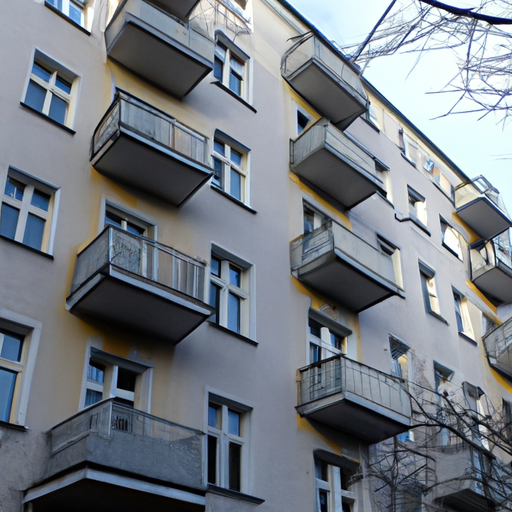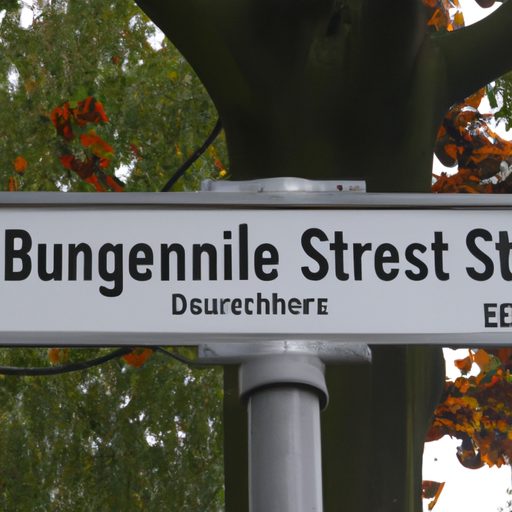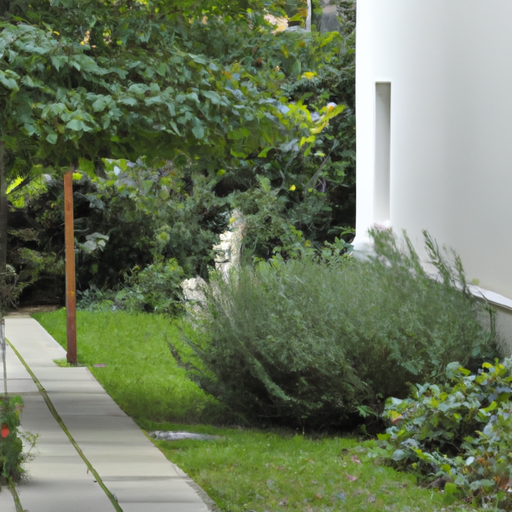The Hidden Architecture of Berlin’s Friedrichstadt
Oh, Berlin! You saucy minx, you. You’ve heard of the Brandenburg Gate, the Reichstag Building, Berlin Wall, and all the other mainstays of Berlin’s architectural landscape. But, darling readers, today we’re going to take a rather hipster-y detour away from the mainstream, and delve into the unsung architectural jewels of Berlin’s Friedrichstadt. It’s time to adjust your horn-rimmed glasses and let’s dive into the labyrinth of design that is Friedrichstadt, shall we?
Our first stop, because who doesn’t love a good starting point, is the Gendarmenmarkt. Hold up! I know what you’re thinking, “But dear writer, that’s not hidden!” And you are right, my astute reader. But we are not here for the obvious. Let’s take a closer look at the architectural trinity of the Konzerthaus, French Cathedral, and the German Cathedral. Did you know these beauties were reconstructed after World War II? Talk about a glow-up!
As we stroll down the streets, keep your eyes peeled for the finer details of the cityscape. See the subtle Baroque and classical influences? It’s like a symphony in stone and mortar, with each building playing its part. And don’t even get me started on the Prussian-era buildings. They’re like the bad boys of architecture – so stern and formidable, yet so irresistible.
Next up, we have Schinkel’s masterpiece, the Friedrichswerder Church. A red-brick spectacle that once served as the Prussian Architectural Museum. It may not be the most flamboyant building you’ll set your eyes on, but its simplicity is its strength. This is the architectural equivalent of that guy who sits quietly at the back of the café, engrossed in a book, and you can’t help but wonder, “What’s his story?”
Now, let’s talk about the Checkpoint Charlie Museum. Yes, the place is thick with tourists, but don’t let that deter you. Its Cold War-era architecture is a testament to the city’s history, a place where East met West, and where architecture met politics.
Oh, and how can we forget the hidden gem that is the Ephraim-Palais? This Rococo beauty is tucked away in the Poststraße, and its ornate façade and swirling staircases will remind you of a time when people actually had the time to appreciate the finer things in life.
And speaking of time, let’s take a moment to acknowledge the architectural time capsule that is the Nikolaiviertel. This charming little neighborhood, with its half-timbered houses and cobblestone streets, is like stepping into an Instagram filter. I mean, who needs Valencia or Juno when you’ve got Nikolaiviertel, right?
Now, I hear you say, “But oh, knowledgeable writer, aren’t these places quite popular?” Yes, they are, my perceptive reader. But here’s the thing – the hidden architecture isn’t just about the buildings themselves. It’s about the stories they tell, the history they hold, and the way they’ve shaped Berlin’s landscape. So, while these buildings may not be hidden in the literal sense, they are often overlooked in favor of the city’s more famous landmarks.
So, there you have it, folks! Friedrichstadt is much more than its famous landmarks. It’s a treasure trove of architectural wonders, each with its own tale to tell. And the best part? There’s always more to discover. So, grab your vintage camera, put on your chunky knit scarf, and get ready to explore the hidden architecture of Berlin’s Friedrichstadt.
Oh, and one more thing. You know what’s the best part about being in Friedrichstadt? You’re only ever a stone’s throw away from a great café or bar. Because, let’s face it, nothing complements architecture quite like a good cup of coffee or a craft beer. Prost!
Until next time, keep exploring, keep discovering, and most importantly, keep appreciating the beauty that is Berlin’s architecture. And remember, the next time someone tells you to take the beaten path, tell them you’d rather be in Friedrichstadt. Because who needs mainstream when you’ve got hidden gems, right?
And on that note, I bid you Auf Wiedersehen! But don’t worry, I’ll be back with more tales from Berlin’s architectural wonderland. Because there’s always more to write, especially when it comes to Berlin. And especially when it comes to Friedrichstadt. And especially when it’s about architecture. You get the idea.
Helpful Q&A:
Q: What is Friedrichstadt and why is it significant in Berlin’s architecture?
A: Ah, Friedrichstadt! It’s like the heart of Berlin’s architectural history. Established in the late 17th century under the rule of Frederick I of Prussia, Friedrichstadt is a neighborhood in the district of Mitte, Berlin. Its significance? Well, it’s a delightful jigsaw puzzle of architectural styles. We have Baroque buildings, neoclassical masterpieces, and a sprinkle of modern architecture – all of this nestled in a grid-like layout, a signature of European city planning in the 17th century. So, when you’re strolling through Friedrichstadt, you’re essentially time travelling through Berlin’s architectural evolution!
Q: Can you mention some examples of architectural gems in Friedrichstadt?
A: Oh, where do I start? Let’s kick off with the grandeur of Gendarmenmarkt! It’s a square that houses three architectural marvels – the Konzerthaus, the French Cathedral, and the German Cathedral. All three are splendid examples of German neoclassicism. Then, speaking of modern architecture, you can’t miss the DZ Bank building designed by Frank Gehry – it’s like a metallic wave frozen mid-curl right in the cityscape! And of course, the Friedrichstrasse shopping street, where even the shops are housed in architectural wonders.
Q: Is Friedrichstadt purely about architecture or does it have other attractions too?
A: Well, calling Friedrichstadt a “purely architectural” neighborhood is like calling a bratwurst just a sausage! It’s not just about the buildings, it’s about the life that fills them. From the theatres in the buildings around Gendarmenmarkt to the cafes and restaurants that line the streets, there’s always something happening here. Plus, you have Checkpoint Charlie, the famous crossing point between East and West Berlin during the Cold War. And let’s not forget the abundance of museums, like the Jewish Museum and the Checkpoint Charlie Museum.
Q: How can one explore Friedrichstadt and understand its architecture?
A: Ah, now you’re speaking my language! My first suggestion? Get yourself a good pair of walking shoes. The best way to explore Friedrichstadt is on foot, allowing you to appreciate the architectural details up close. For a deeper understanding, I’d recommend booking a guided architecture tour. These tours are led by knowledgeable guides (like me, but less funny), who can not only point out the architectural details but also explain their historical and cultural significance. Also, don’t forget to pop into the local pubs and cafes. You never know, you might get to hear some local architectural lore over a pint of Berliner Weisse!
Q: What’s the best time to visit Friedrichstadt?
A: Well, the beauty of architecture is that it stands tall and charming throughout the year! But if you’re asking for my personal preference, I’d say spring and summer. The buildings, especially the baroque and neoclassical ones, have a way of looking even more beautiful under the warm sunlight. Plus, the outdoor cafes and beer gardens open up, adding a lively atmosphere to the neighborhood. But hey, whether it’s the crispy-cold winter or the vibrant fall, Friedrichstadt is always ready to mesmerize you with its architectural charm!


